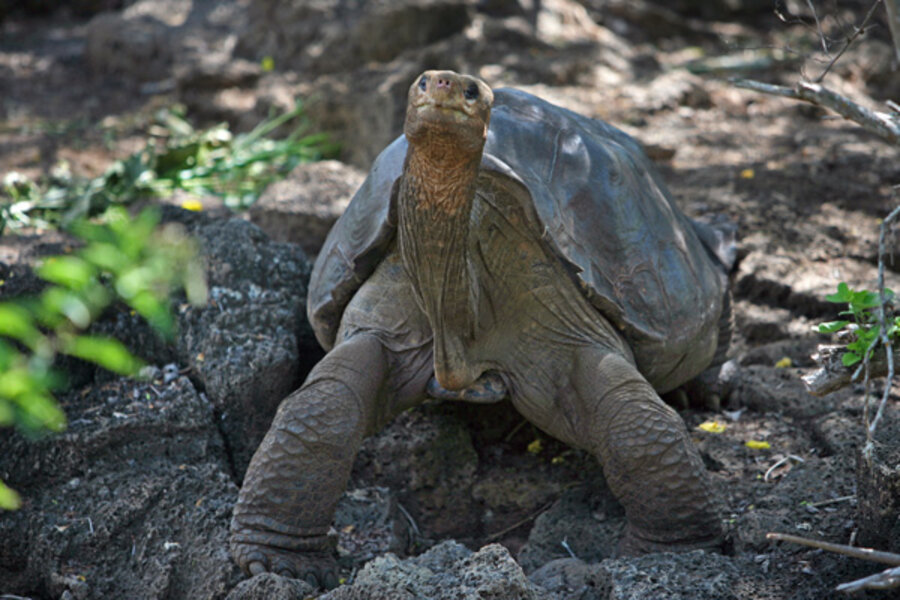Galapagos giant tortoise Lonesome George dies after not so lonely life
Loading...
| Mexico City
Meeting the giant tortoise Lonesome George on the Galapagos Islands ranks as one of Melanie Stetson Freeman's top experiences as a longtime staff photographer for the Christian Science Monitor. “It's so cool to see the last of something,” she says. “It is so sad that he is gone.”
The only remaining Pinta Island giant tortoise – believed to be the last of his species – Lonesome George died on Sunday. No one knew his exact age, but he was believed to be about 100 years old.
Melanie and I went to the Galapagos Islands to do a cover story for one of the first editions of our new magazine back in 2009. It was a look at an epic quest to reconstruct nature.
It was not Mel's first trip to Ecuador's archipelago, among the most biologically unique places on the planet and best known for inspiring Charles Darwin's theory of natural selection. She went 20 years prior, to look at whether tourism was hurting or helping the Galapagos Islands.
“The first time I went there, you weren't allowed to see Lonesome George, because he was so unusual, they were really taking care to protect him,” she says.
So when we returned, and Melanie had full access to the tortoise in the enclosure where he was closely monitored, she was thrilled. Melanie, more than anyone I've ever met, loves wildlife, appreciating every sound and movement a creature makes. She spent hours with Lonesome George as I tried to track down government officials and conservationists for interviews.
“I would go back whenever there was empty time, go back and just sit there and watch,” she says. “Not like he moved around so much,” she laughs. But just watching the slow crawl of an ancient creature, one of the world's rarest, his wrinkly skin, and really long neck, “I thought he was adorable.”
Lonesome George was an icon of the Galapagos and a symbol of the urgent need to conserve nature, and scientists had tried everything – I mean everything – to get Lonesome George to mate and keep the subspecies alive. Our tour guide, a local woman, had a side job for a while trying to get Lonesome George “interested” in mating. Two females were brought into his enclosure too, and Melanie had the rare opportunity to see them mating (though those eggs never hatched).
Though Lonesome George was about 100, that is apparently not very old for his species, scientists say. He could have lived for at least a few decades longer, even to 200 – perhaps long enough to provide the elusive offspring that the conservation world so desperately sought. (They will be doing an investigation to determine the cause of death).
And while George may have been lonesome for being the last of his kind, with his potential mates, and scientists, journalists, and the public endeared to him, he lived a full life. Mel remembers delighting with the others as they saw him mating. “We started laughing, saying he wasn't so lonely anymore,” she says.






